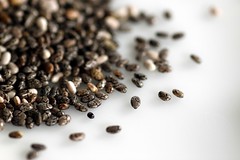Fresh from running his first marathon, Think Productive UK founder Graham Allcott reflects on the experience and offers 10 lessons learnt the hard way…
On April 21st 2013 I ran my first marathon. I have had a fascination with doing it for a long time and it certainly lived up to expectations – it was as exhilarating, as inspiring and as tough as I had expected. It’s not something to undertake lightly, but equally I think it’s something that almost anyone can do. There’s lots of advice out there, and much of it common knowledge – get good shoes, warm up properly, get a good training schedule – but here are a few things that are less-talked about.
All of these are from personal experience, having run one marathon in 4 hours and 43 minutes. I got lots of expert advice before running, but it’s much harder to find advice from people who remember what it’s like to be a complete beginner. So hopefully these are useful, but go and look for advice from veteran runners too!
1. The race is the easy bit.
Race day was absolutely amazing: there were only two moments I remember not hearing anyone cheering and both of these were where the race entered tunnels. The sun shone, the bands played, I was witnessing an amazing festival of humanity and the running was almost inconsequential! Sure, it hurt past 20 miles or so, but I loved every minute – after being nervous and worried in the weeks beforehand, silly me!
2. Know why you’re doing it.
You need to be ultra-clear on why you’re running the marathon.
- Are you wanting to set a fast time?
- Are you trying to improve fitness or lose weight?
- Are you inspired to raise money for a great cause?
- Are you trying to tick it off your ‘bucket list’?
Personally my motivation wasn’t competitive. I wanted to raise cash for Centrepoint and just experience something unique and amazing. Knowing this was very empowering: every time I got advice or had conversations about the race, people would ask me “what time are you planning on doing” and I could confidently say “I don’t care“.
When you’re training and you have a bad run (feeling injury niggles or fatigue), the temptation is to try and push yourself to improve fitness and improve your time, but of course you risk causing more serious injury. I was clear that my biggest priority was to arrive on the start line in one piece. Everything else was a bonus. Knowing your motives helps make sense of the barrage of often-conflicting advice you’ll be given along the way. Do it your way.

3. Your training schedule is just a guide
In the middle of my training, I got an injury which needed physio and a couple of weeks of rest to sort out. And even then I could occasionally feel my knee niggling away.
At first I felt guilty and anxious about missing my training. I spoke to a personal trainer who provided a lot of reassurance and said that if you’re carrying an injury, you can actually train for a marathon running only once a week on the road and doing the rest of your fitness training in the gym.
This is just one illustration of the fact that your schedule is just a suggestion, not a rigid structure to beat yourself up with. Feel good about the work you DO manage, not guilty about the sessions you miss. Personally, I had many weeks where I only ran twice and did little by way of gym work or anything else. I learned not to worry about it too much – and reminded myself I wasn’t in it for a fast time!
4. Socks and Vaseline matter as much as good shoes!
Blisters and chafing are painful. Spread Vaseline or creams between your legs and arms and even on your feet. And make sure you’re wearing specialist running socks. There are two types: compression socks, which many runners wear up their calves on order to compress the muscles, and the more standard running socks, which basically have two layers at the front of the foot so that you avoid blisters. Invest in a few pairs of these before you start running longer than about 10 miles.
5. Apps
I used “Map My Run” during training and also on the day itself. It’s useful to track your times, your mileage and even how many calories you’re burning as you go. Every mile it gives you an update in your headphones detailing how many miles you’ve run, your total time and your current pace. Even for someone not motivated by your overall time, it’s great to know your pace at regular intervals.
6. Beware of fads and marketing
So much advice comes from salespeople. Not surprisingly then, it’s often contradictory, because they’re wanting you to gear your training and race around their shoes, their clothing, their drinks, their snacks, their gyms and so on. Make sure you see through this.
One of the biggest fads in recent years is barefoot running. The idea is that cushioned shoes actually get in the way of our running and by running ‘barefoot’, we train our muscles to run as nature intended. Except of course you’ll need kevlar protection from broken bottles, so buy new ‘barefoot shoes’. I tried this after reading “Born to Run” by Christopher McDougall, a book recommended to me, as it is to many people who start running. The book is entertaining and quite convincing, but whilst barefoot running may suit a small minority of runners, but it can actually be quite dangerous: running too much too soon can cause serious injuries and I know a few people for whom barefoot running will be the last running they do for a good while due to shin splints and the like.
7. Chia seeds
My one takeaway from the barefoot running book was to use Chia seeds. Available online and from health stores, they are the secret ingredient that the Tarahumara tribe in “Born to Run” use to develop their stamina.

Chia seeds are a “superfood” and pack a punch: One hundred grams of Chia contains:
- 41g of carbohydrate
- 20g of protein
- 16mg of Iron
- 714mg of calcium
- as well as Niacin, Thiamine and Riboflavin.
You can pour it on your porridge, or better still, add Chia to your water bottle you take running, and it absorbs water, turning into a disgusting but highly nutritious and hydrating frogspawn-like substance, which you quickly get used to glugging down.
8. Foam rollers rock!
Foam rollers are a necessity at the end of a long run. You use it to help warm down, stretch your muscles, focus on each muscle group in turn and push out any knots or adhesions that can build up in your muscles. I was a late convert to the joys of foam rollering. Get in there early: for little more than a tenner you have a cheap and reasonable substitute for regular sports massages!
9. On the day, be prepared to cover 30 miles, not 26.2!
One of the most potentially soul-destroying moments on the day was this realisation.
There is a blue line painted in the middle of the course. Follow this line and you’ll run 26.2 miles. However, if you deviate from the line, you’ll undoubtedly end up running further.
My app clocked my London Marathon course at 28.5 miles! I was doing a lot of weaving in and out of crowds (which is hard work too!) just to get some clear space around me in which to run. This gets harder if you’re still running past 15 miles as the number of walkers getting in the way increases! And then it’s another mile to the start line from the tube and half a mile after the finish line back to the real world. So if I had my training time all over again, I’d have run further in my long training runs – certainly more than the 20 I measured using “Map My Run” (which on race day meant halfway between miles 18 and 19!).
Psychologically, that was the toughest thing to take: they say when you reach the 20 mile point you’re halfway there, and certainly you’re counting every step at that stage. But you can easily prepare for this now and I’ll know for next time!
10. Gels, Jelly Beans and Gelatine.
I have a friend who is an ultra-runner. After a particularly bad 16 mile run where I felt myself running out of energy and “hitting the wall“, I figured he’d be a good person to ask for advice. He really turned me on to the importance of gels, and fuel in general. He once told me ultraruns are “an eating competition with a bit of running thrown in for good measure”.
A marathon runner burns around 4000 calories during the race, so your challenge is to have as much of that stored in your glycogen stores in advance (this is basically what “carb loading” is for) and then put as many calories into your body during the run as you need to avoid hitting the wall. Carbohydrate Gels are the easiest way to do this. And spectators on the route on race day hand out wine gums and jelly babies. It’s important to experiment with what your stomach can accommodate well in advance: I had 2 or 3 brands of gel that worked well for me, but others that didn’t.
And on race day, I over-indulged in gelatine based sweets from the crowd which left me feeling a little sickly. I also used bananas and cereal bars regularly, just because if my stomach had something substantial in it other just sweets and sticky gels, I felt less sick! And listen to your body: on some of my long training runs, I would nip into a shop and get a packet of crisps or a pint of milk: salt and calcium are just 2 of the things your body might crave, but listen to your body and get your fuelling right.
Finally, enjoy the experience. I’d prepared mentally for the distance, but what I hadn’t counted on was the emotional moments you witness around you. I saw people in some quite desperate states (I was checking the news the following day to make sure they hadn’t died) and you see beautiful expressions of humanity in your fellow runners, in the crowd and just in the whole atmosphere of the event. It’s an emotional roller-coaster on top of the challenge of actually running it yourself! It’s truly one of the most memorable things I’ve ever done and I’d highly recommend it!

